Fires have forced hundreds to flee their homes in Tas on Australia Day
Australians have flocked to beaches amid scorching Australia Day temperatures, as bushfires force some to leave their homes.

The intense heatwave is continuing today, with the high temperatures that have been plaguing Adelaide and Melbourne spreading across the country for Australia Day.
The blistering weather is doing firefighters no favours, with bushfires in Tasmania forcing hundreds to flee their homes.
An uncontrolled bushfire at Riveaux Road and Tahune Airwalk was putting Castle Forbes Bay, Geeveston, Port Huon, Cairns Bay and Waterloo at risk on Saturday afternoon with embers and ash threatening properties.
While temperatures in Tasmania have been dropping, bushfires are still blazing across the state, displacing locals and closing parklands that would normally be packed for Australia Day.
Related story: Adelaide, Melbourne heatwave could break records
Related story: Heatwave 2019: Record temperatures soar across Australia
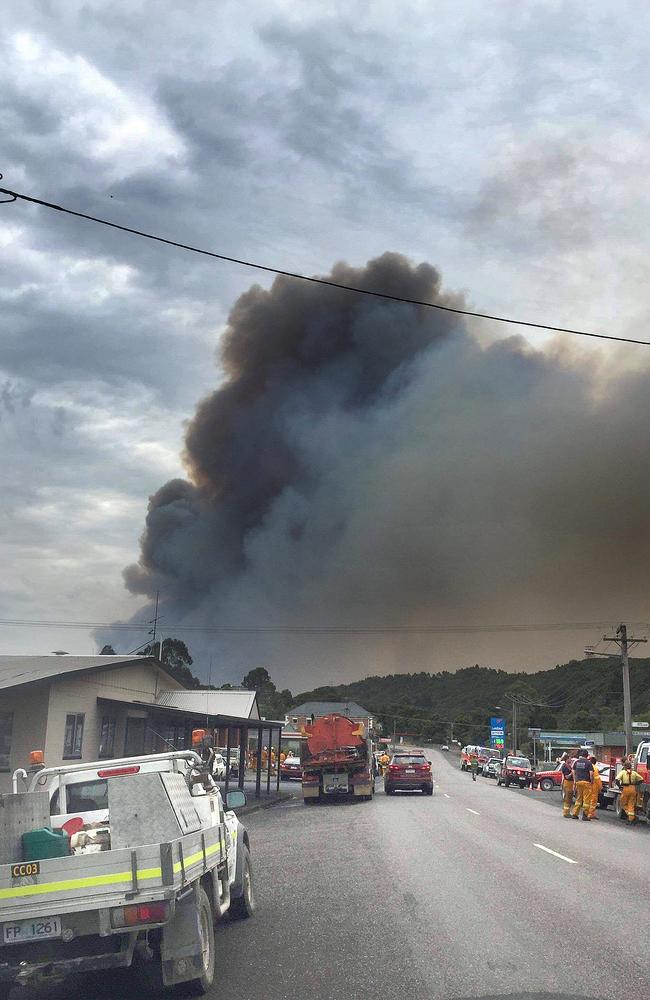
Fifty-six blazes are burning in the state today, with 28 of them uncontrolled amid tinder-dry conditions.
Three structures were reported destroyed - a homestead, a kayak shed and a fishing shed - as the fires razed 87,000 hectares.
People are being told to stay away from the bush all long weekend, and a total fire ban remains in place across the state.
Deputy chief officer Bruce Byatt of the Tasmania Fire Service asked the community to adjust their Australia Day plans in light of the ban.
“While we want everyone to enjoy their weekend, we would ask people to reconsider holidaying in bush or remote locations,” he said.
“That total fire ban applies to the entire state. This means all outdoor fires, barbecues and portable stoves using wood, charcoal or other solid or liquid fuel are banned.”
HEALTH WARNINGS
Health authorities are again warning people to stay hydrated and minimise physical activity — particularly the most vulnerable, including the elderly, children, and those with heart and lung conditions.
While many take to the outdoors on Australia Day, NSW Health expert Richard Broome suggests moving festivities from the middle of the day so they fall outside peak sun times.
“Perhaps think about having a breakfast BBQ rather than an afternoon BBQ, or even postpone your activities until after it gets dark,” he told reporters.
“We understand people do like to enjoy a beer, but please do it in moderation.”
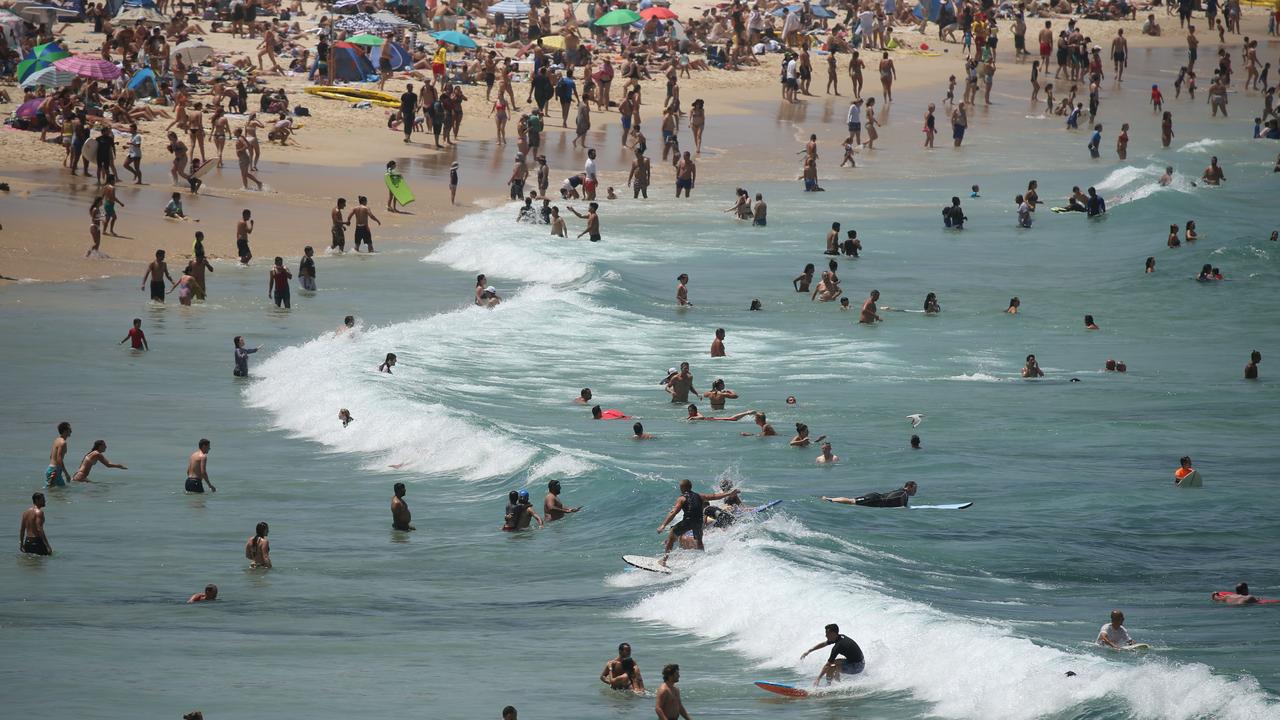
AUSTRALIA DAY FORECASTS
Sydney’s western suburbs will cop the brunt of the heatwave with temperatures soaring to up to 42C, but remaining at a manageable 33C in the city.
Canberra will also hit a scorching 40C.
Newcastle is set to reach 35C in the north and Wollongong will nudge 30C.
Queenslanders are warned to expect overcast conditions and possible showers later in the day. Brisbane is tipped to reach a cloudy 32C, while Townsville will reach 31C.
Melbourne will finally get some relief from yesterday’s scorching heat (44C), with a cool change predicted this afternoon.
Adelaide’s Australia Day forecast will be much cooler than the record-breaking heat they’ve seen this past week. The City of Churches will hit 29C with cloud cover.
Bushfires continue to rage in Hobart, though the city will only reach 27C on Australia Day
Perth will heat up to 31C today and continue to rise across the weekend, expected to hit 35C on Monday.
Temperaturess will soar to 42C in Alice Springs, and Darwin will creep up to 32C.
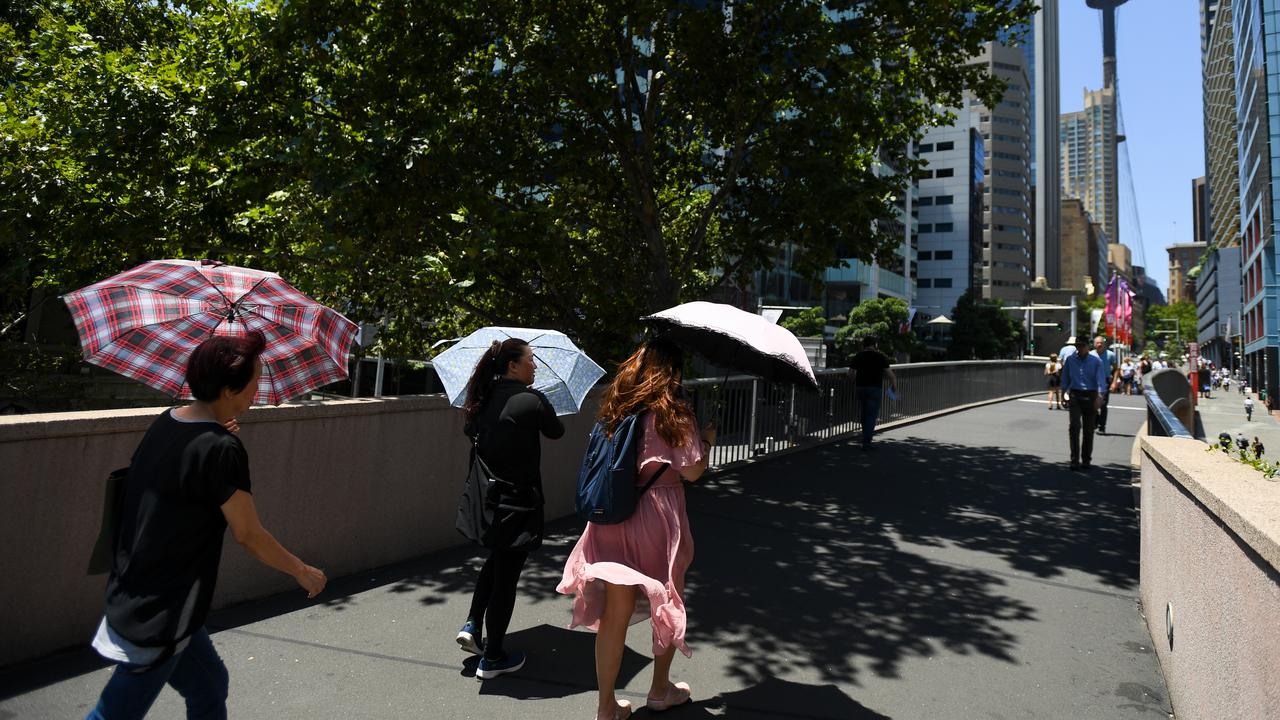
NSW COPS THE BRUNT
Australia Day revellers can expect the temperature to soar in hot spots like Penrith (41C), Wilcannia (45C), Bourke (46C), Gundagai (44C) and Dubbo (43C).
And other parts of the country will swelter today, with authorities warning people to stay inside out of the worst of the heat.
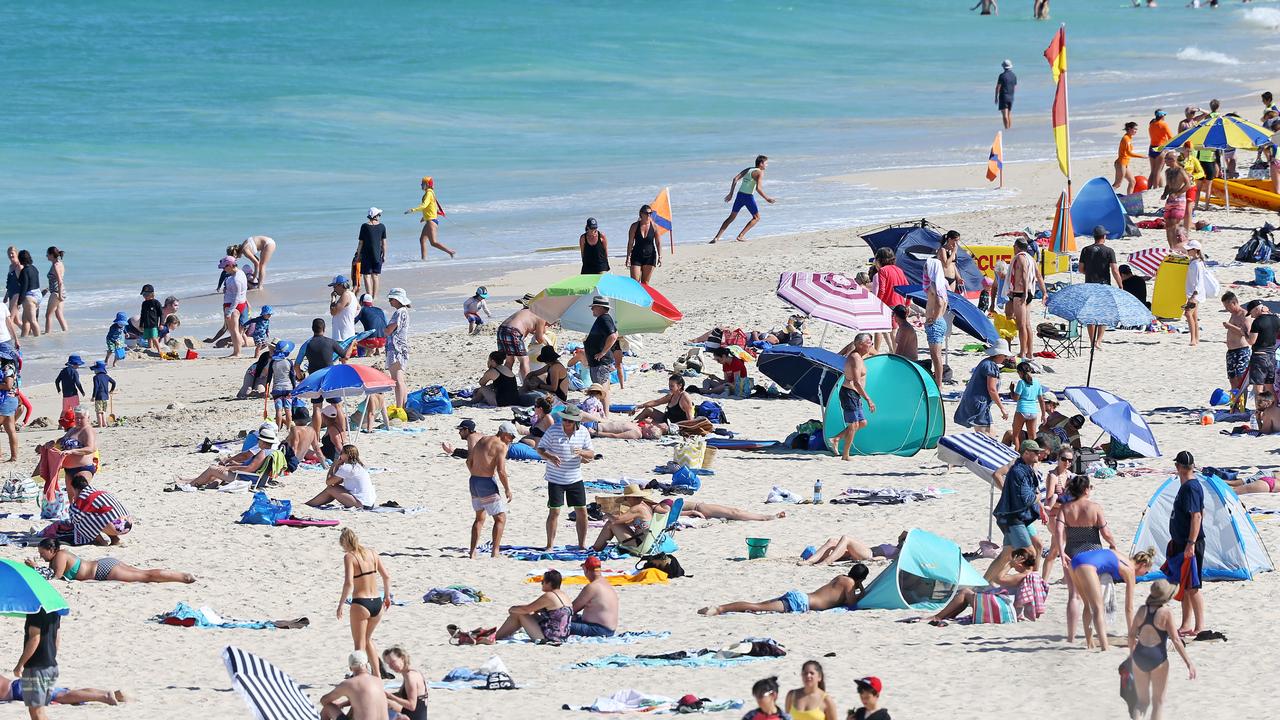
Parts of western NSW were already sizzling on Friday, with Hay, Swan Hill, Ivanhoe and White Cliffs all surpassing 46C by lunchtime.
“This next hot spell will take us through to the end of month so I wouldn’t be surprised if it was the hottest January ever,” meteorologist Rob Sharpe told news.com.au.
A high pressure system over the Tasman Sea that’s barely moving, coupled with a trough across inland NSW, have allowed heat and humidity to build up over the state, while hot conditions are also being pushed south from Central Australia.
“The combination of the heat and humidity makes it quite sticky, muggy and gross — particularly if you’re in the eastern parts of NSW,” the Bureau of Meteorology’s Gabrielle Woodhouse told AAP on Friday.
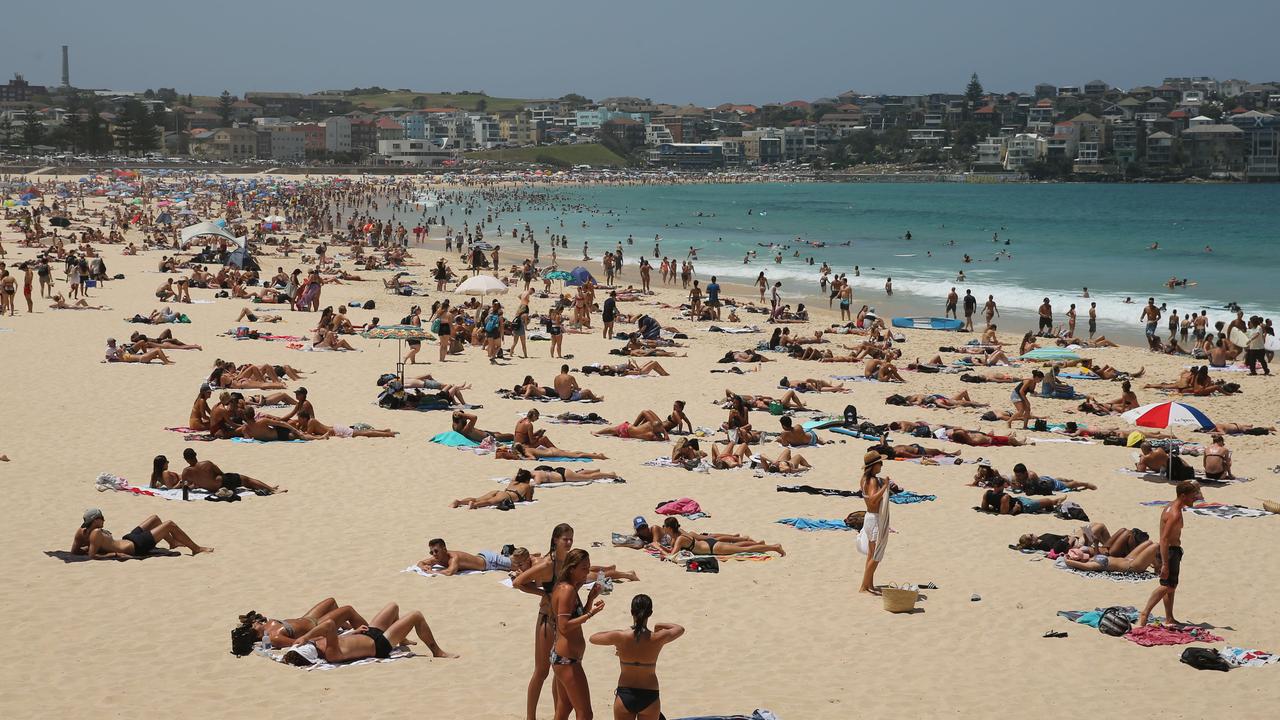
Thunderstorms are possible throughout the state over the weekend, but they’re expected to bring little rain. Temperatures are tipped to drop only slightly by Monday before the heat returns.
“While this change is going to cool a little bit, it’s going to be very short-lived,” Ms Woodhouse said.
Sleeping isn’t going to be easy over the next few nights either, with minimum temperatures to remain above 20-25C in Sydney and higher in the west.
And just in case you were planning on blasting the AC from now until winter, think again.
Meanwhile in Australia.... #straya #heatwave pic.twitter.com/FPt1m6zv1E
— Ryan Rodgers (@RyanRodgersYo) January 25, 2019
“Machines such as cars and air conditioners work at a higher efficiency (Carnot efficiency) in lower temperatures,” says Paul Briozzo, a mechanical engineer and expert in mechanical infrastructure from the University of Sydney.
Heatwaves don’t just impact people, they also affect infrastructure.
“In Sydney’s west this coming long weekend, temperatures of 42C are forecast. In this environment, the Carnot efficiency would drop to 71 per cent,” explains Mr Briozzo.
“This drop in efficiency leads to lower fuel efficiency and higher fuel consumption and emissions which is not an ideal outcome for our environment.”
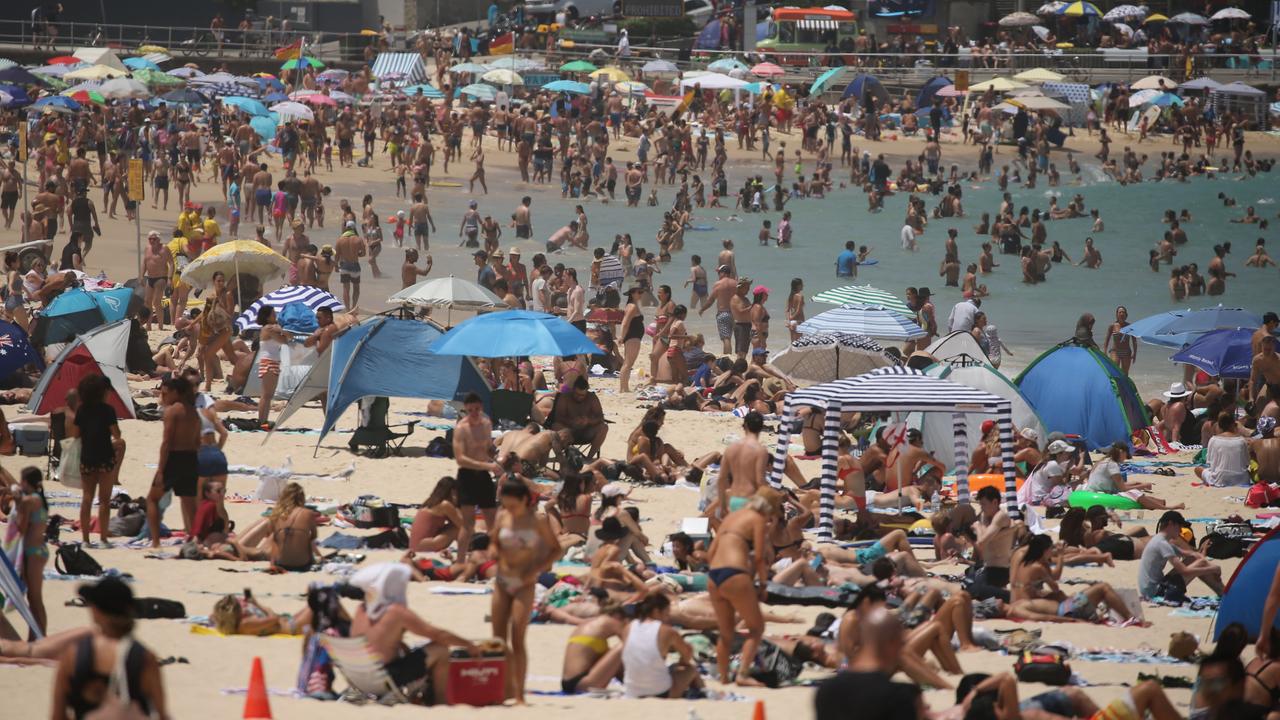
TIPS TO BEAT THE HEAT
— Drink plenty of water
— Avoid alcohol and hot/sugary drinks
— Limit physical activity
— Avoid the sun during the hottest part of the day (10am-3pm)
— Wear sunscreen and reapply regularly according to instructions
— Wear a hat, sunglasses and loose fitting garments made from natural fibres
— Wear comfortable shoes
— Carry medication on you in case you are delayed getting home
Health authorities are also warning revellers to look out for signs of heat-related illness, including confusion, dizziness, fainting, nausea, vomiting, weakness, headaches and loss of sweating.
People showing any of these signs should seek urgent medical attention.
And don’t forget about your four-legged friends.
“People who receive support from assistance animals must also consider the animal’s needs, such as ensuring they have access to water and shade, and checking that surface and pavement temperatures are cool enough for them to walk on,” Dr. Michelle Villeneuve, a health expert from the University of Sydney, said.
Phew! Survived today's #MelbourneWeather #heatwave of 44C (or 111 F) without a #poweroutage like yesterday (no power for 2 hrs due to Thursday's 44C heat). #Coolchange has now finally arrived! Hoping the 130K Melbournians who did lose power are now doing okay! pic.twitter.com/rFrpXi5EIK
— 💜ð“ð“¾ð“»ð“¸ð“»ð“ªðŸŒºð“¢ð“½ð“ªð“»ð“µð“²ð“°ð“±ð“½ (@Aurora_Starlit) January 25, 2019
- with AAP



